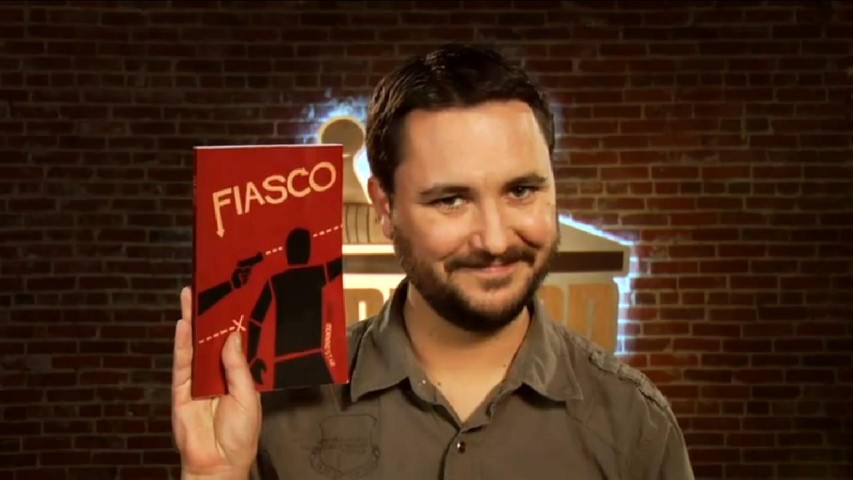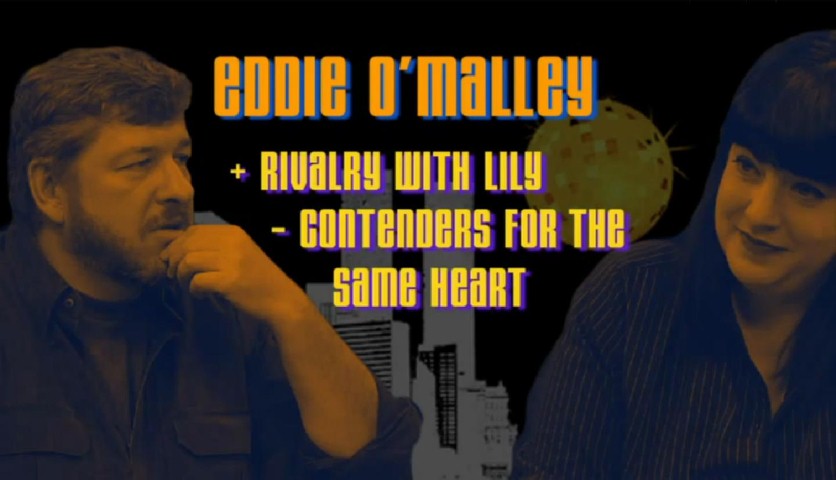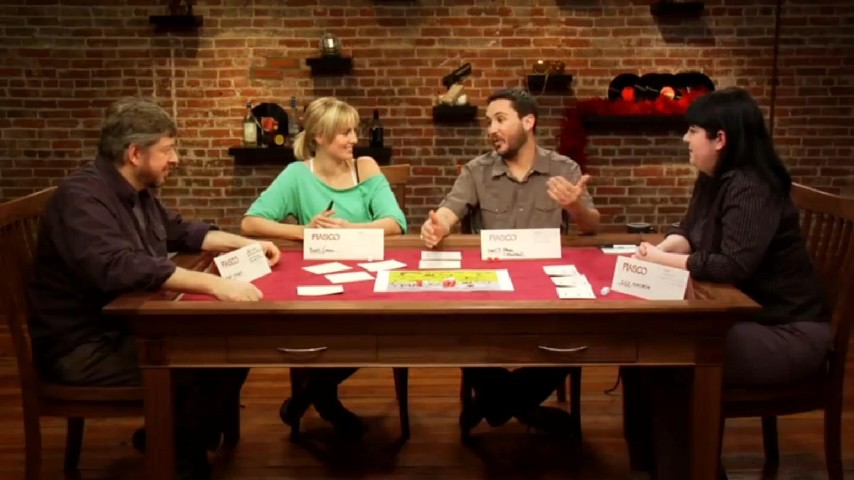TableTop’s Fiasco episodes may be the greatest roleplaying documentary made to date. While live-action roleplayers get things like Darkon or Monster Camp, pen and paper roleplayers have had to make do with Tom Hanks feeding into an absurd moral panic or Marlon Wayans acting as cheap comedy relief—why are there no good Dungeons and Dragons movies?
When Wil Wheaton, Alison Haislip, Bonnie Burton and John Rogers sit down to play Bully Pulpit’s Fiasco—a game where what can go wrong will go wrong—that changes for the better. Not only are the two episodes it takes to show their session a joy to watch (and they are a pleasure) but they succeed in something that is really difficult to do: capture the essence of a game session. Like bottling lightning, it isn’t easy, but TableTop manages it!
When TableTop aired their first episode, about Small World, I was pretty excited. As a roleplayer, I wasn’t much of a table top gamer. I figure, if I can get folks to sit at the table and geek out for a few hours, why not play a roleplaying game? Well, TableTop turned me around; I bought Small World on their recommendation, got a bunch of my non-gaming friends into it, and I’ve picked up an expansion pack for it already. The show works, is my point; I’ve bought Gloom because I saw it on TableTop as well. No surprise, you can add Fiasco to that list; I went down to my local gaming shop and picked it up just the other day.

I didn’t know what Fiasco was before the episode started and when I figured out that it was a roleplaying game, I was well and truly amped. Fiasco is a game in which you capture the dark comic confusion of the Coen brothers, where snappy Tarantino dialogue in the midst of mounting carnage is provided by the players, where the good-hearted charm of Simon Pegg’s bumbling runs smack dab into the harsh realities of a Greg Rucka spy comic. Quirky characters in unfortunate circumstances with the odds piling up against them, turning on each other and going out in a blaze of…well, going out in a blaze of glory might even be asking too much. The game is played without a “Dungeon Master,” with a variety of random charts taking its place. Everything else is left in the player’s soon to be bloody hands. At the end you find out if you’ll get the Wes Anderson bittersweet ending, the Guy Richie gritty ending, or the Reservoir Dogs ending.

Each game of Fiasco starts with a scenario—in this case, “Saturday Night ’78,” written by Wil Wheaton—formerly Star Trek’s Wesley Crusher, now blogger, actor and host of the show— along with Jason Morningstar, who created Fiasco, and Will Hindmarch. TableTop’s crew of players are Wil, playing as Marty Spano, a two-bit director anxious to his the big time. John Rogers—show runner of Leverage, where he presumably met Wheaton while he was playing the hacker “Chaos”—is Eddie O’Malley, desperate owner of the now-closing nightclub “Glamorous.” Bonnie Burton—author of the Star Wars Craft Book— plays Lilly Anastasia, the waitress turned disco celebrity hoping to use Marty Spano to make it in the pictures. Alison Haislip—one of the stars of Battleground, which I think you have to say prefaced by “Hulu’s first original series…”—is Betty Capozzi, the naïve beauty looking to escape from peepshows and to rekindle the flame with her ex, Eddie.

This was all figured out during the set-up, which is its own bonus episode. As a game geek, it is worth watching; it will help you grok how the mechanics of the system work, and how the characters were built. As for objectively good television? They were right to cut it and spin it out on its own. It is the nitty-gritty of the game, and watching the nuts and bolts are interesting to some but it isn’t snappy, it doesn’t pop the way the two-part episode does.
Think of it as behind the scenes footage. If you’ve got an interest in that sort of thing, it is fascinating, but if you don’t you can safely skip it. If you want to play “Saturday Night ’78” for yourself you can download it for free.
The first half is when things really start rolling, and you can see the strength of Fiasco as a system. Everyone has a loose character framework—tied together by relationships, needs, objects and places—but those character develop into a cogent whole pretty immediately through roleplaying. Think of the relationships and whatnot as a minimalist character sheet, cut down from attributes and spells to the heart of things—roles. Since everyone is playing in a milieu, there isn’t a lot of need for balance: the system relies on the player’s pursuit of the theme and the social pressures of telling a good story to keep things from falling apart. If they do fall apart, well, Fiasco is all about how the center cannot hold, after all. Which is the point of The Tilt, which is how the first episode ends. Each scenario—we’re watching “Saturday Night ’78,” remember—has a specific list of tables for the set-up. Obsessions, connections, locations, items—these change from scenario to scenario, but The Tilt stays the same. A mixture of mayhem, tragedy, innocence, guilt, paranoia and failure—The Tilt is where everyone’s big plans start to go pear-shaped.
Oh, glorious fallout. The second half of the Fiasco episodes contains an energy familiar to anyone who has had one of those roleplaying sessions where everything just clicks. Where your character’s convoluted backstory comes together with another characters behind the scenes plotting and they mix like ammonia and bleach. Really, these two episodes just cut to the heart of what makes the hobby so fun. It is both totally unpredictable…and totally your own creation. Watching all the wonderfully terrible dominos fall down leaves you feeling like Hannibal from The A-Team. I love it when a plan comes together. You can see that everyone succumbs to the duality of the game: on one hand, they are immersed in their roles, but on the other hand they all have that level of distance that allows them to throw their own characters under the bus. The whole thing ends with The Aftermath, a montage sequence in which the players wrap up the fate of their characters. Like The Tilt, The Aftermath is common to all the Fiasco scenarios, and ranges from “the worst thing in the universe” to “grim” or “pathetic” all the way up to “awesome” and other more merrily explicative laced options. By this point, the schadenfreude has been aged to a fine vintage; drink deep!
Mordicai Knode enjoys a good tragedy now and then, don’t you? Maybe that is why he got such a kick out of Vampire: The Masquerade. If you’d like, you can follow his fiasco of a Twitter and his tilted Tumblr.










